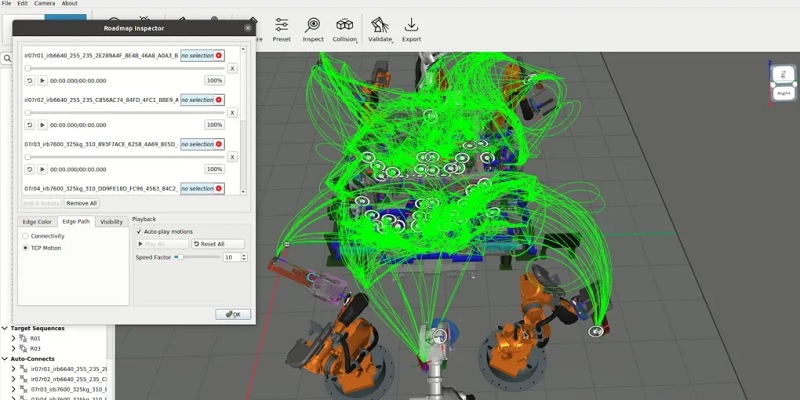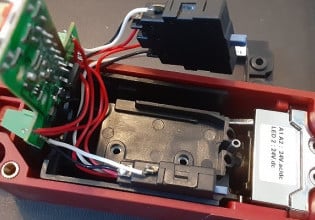Realtime Robotics Augments Workcells With Optimization-as-a-Service
Troubleshooting robotic motion paths is best done before the first collision event causes a downtime headache. Realtime Robotics has launched a new service to help designers well in advance of failures.
Designing and building automated robotic equipment requires extensive thought and skill to ensure the equipment can perform as efficiently as possible, free from robot collisions and downtime.
In today’s engineering landscape, we enjoy advanced 3D modeling software that allows designers to simulate robot paths, testing different robot positions quickly and easily. However, performing all the design and simulation tasks in-house isn’t always as easy as the software solutions might attempt to convey.
Realtime Robotics is a software company that offers solutions designed to assist engineers in producing and programming collision-free robot paths. Recently, Realtime Robotics announced the launch of a new optimization service that analyzes automated processes to increase efficiency by reducing cycle times and potential downtime events.

Overall equipment effectiveness, or OEE, is an important metric for meeting production goals. Image used courtesy of OEE
Machine Efficiency and OEE
Manufacturing efficiency is often rated by a factor known as OEE (overall equipment effectiveness), comprising product output quality, machine availability, and performance while operating. These three factors make up significant production benchmarks, so a lot of time is spent during a new build ensuring the equipment operates at the stated OEE numbers.
During the design phase of equipment manufacturing, it can be quite difficult to know if your designs will operate at the intended OEE metrics of cycle time and quality. Realtime Robotics uses digital twin technology to analyze equipment before production to predict and remove inefficiencies.

A screen shows the iteration of hundreds of possible motion paths to increase efficiency and decrease collision risks for multi-robot workcells. Image used courtesy of Realtime Robotics
Optimization-as-a-Service, or OaaS
Optimization is the process of reviewing current designs and trying to find the best and most efficient design possible. When it comes to robots, the placement of points and the motion path can greatly affect the cycle time of a machine. If the machine is not operating at peak (lowest) cycle times, the yield from the machine will not be as expected, resulting in a longer return on investment.
Realtime Robotics now offers this optimization as a service (OaaS) whereby the customer can submit 3D models of existing equipment or new designs, and Realtime will create a fully functional digital twin. This digital twin is then analyzed and manipulated to find bottlenecks, possible robot collisions, and inefficient motion paths.
Realtime Robotics uses advanced proprietary algorithms and expertise to generate and test hundreds (or thousands, for complex programs) of robot paths based on reach, availability, and other real-world parameters. The result from the optimizations produces lower cycle times and closer proximity robots to cut down on wasted space.

Realtime Robotics illustrates the solution workflow for ‘Optimization-as-a-Service.’ Image used courtesy of Realtime Robotics
Digital Twin Software
As the name implies, a digital twin is a recreation of actual equipment in a virtual space. With 3D modeling software now nearly ubiquitous for machine builders, most equipment already has a 3D model in the digital space. Digital twin software combines those digital models with the true motion and process simulations of equipment in operation. The digital twin can simulate components or parts moving throughout the process. Digital twin software is also used heavily with robots as paths, obstacles, and collisions can be predicted. Some of the robot code can even be produced by digital twin software!

Animation of multi-robot simulation for advanced motion planning. Video used courtesy of Realtime Robotics
Multi-Robot Automation Workcells
Integrating a machine with multiple robots in a confined space requires many testing and troubleshooting hours to ensure the robots will not collide. Typically, robots operate in a closed system and are unaware of surrounding robots or obstacles, attempting to reach any commanded position without hesitation. For this reason, the integrator needs to ensure there are properly configured restricted and shared zones. Even with these interlocks, mistakes can be made that will result in robots colliding.
By using software to simulate robotic equipment, thousands of scenarios and robot paths can be tested to reduce the chances of a collision. Realtime Robotics, already an expert in developing collision-free robot paths, now offers this optimization service to analyze and streamline your designs before the first hardware hits the plant floor.






